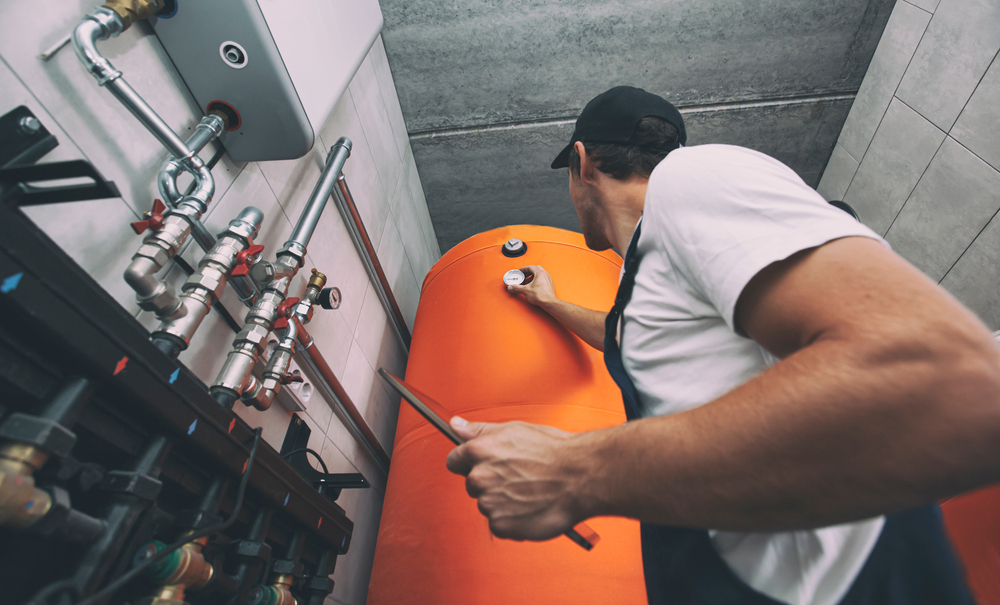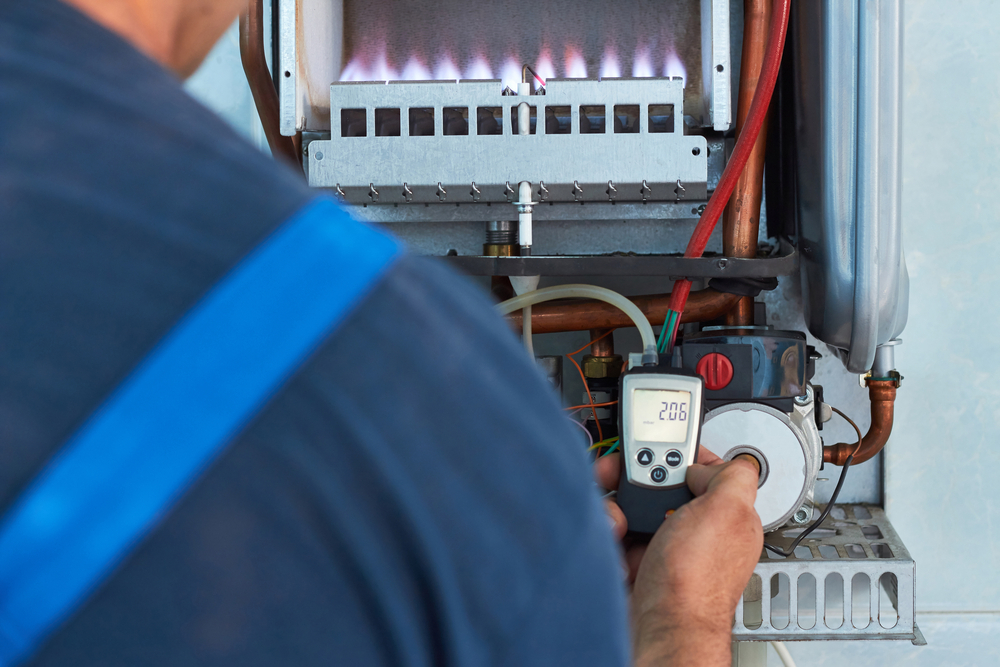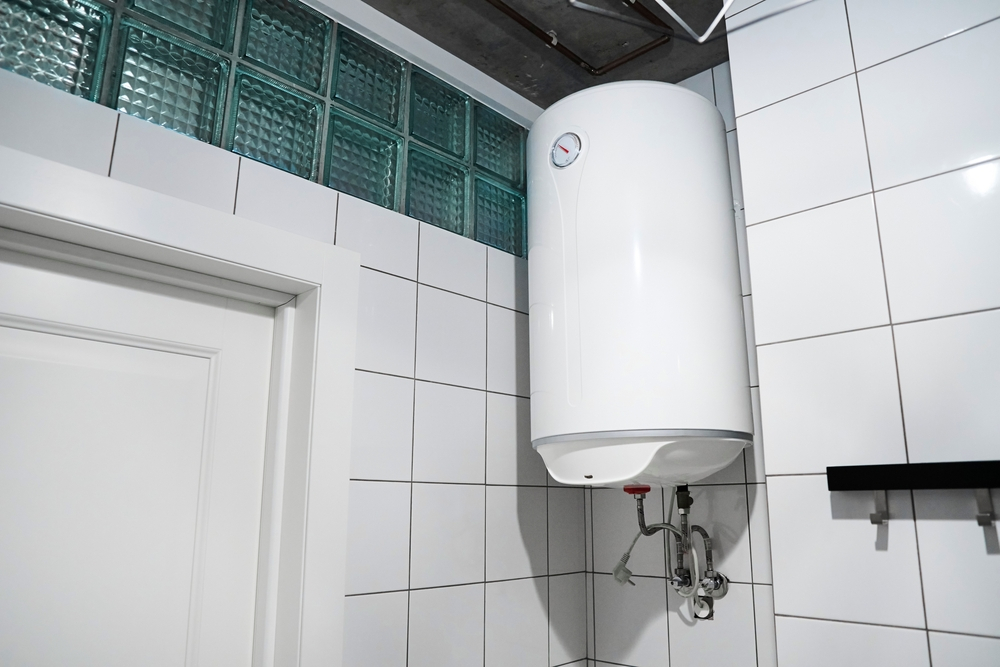Most homes include a water heater as a basic item since it supplies the hot water required for daily uses including cooking, cleaning, and bathing. Maintaining a consistent supply of hot water depends on your heater—traditional tank-style or modern tankless system—being kept in good operating order. Water heaters can develop problems that cause ineffective performance, increased energy bills, or even total system failure without routine maintenance.
This manual is to provide you the information to properly maintain your water heater and solve typical issues. Following these guidelines can help your water heater last longer, save expensive repairs, and guarantee effective operation.

Regular Maintenance Tips
Maintaining perfect operation of your water heater depends on regular maintenance. Every homeowner should do these basic maintenance chores below.
Schedule Professional Inspection
Arranging frequent professional inspections is one of the most crucial measures you can do to keep your water heater running. An accomplished technician can spot possible problems before they become significant ones. They will look for wear and tear, make sure the system is running safely, and complete any required maintenance chores during an inspection. If your water heater is older than five years, specifically, it is advised to get it checked at least once a year.
Check for Leaks
One typical problem that may cause major harm if not quickly fixed is water leaks. Check the surrounds of your water heater often for rust, puddles, or moisture. Focus especially on the relationships between the water heater and the pipelines. Should you discover any leaks—even little ones—you should take quick care of them. Leaks could indicate a loose connection needing tightening or a malfunctioning tank.
Flush the Tank
The efficiency of your water heater may be lowered and its lifetime shortened by sediment accumulation in the tank. By removing these sediments, flushing the tank aids to preserve effective operation. Use these guidelines to flush your tank:
- Shut the gas valve or power supply.
- Attach a garden hose to the tank’s drain valve at its bottom.
- Run the line to an appropriate drain-area.
- Open the drain valve to let the tank empty totally.
- Shut the drain valve, take off the hose, then switch on the cold water supply to refill the tank.
- Turn the gas back on once the tank is full.
Although flushing the tank should be done at least once a year, in hard water places you could have to do it more often.
Inspect and Replace the Anode Rod
One of the most important parts keeping the tank from rusting is the anode rod. It draws corrosive components from the water, therefore preventing rust of the tank liner. The anode rod gradually corrodes and must be replaced. Using these guidelines, check the anode rod:
- Turn off the water heater’s gas or electricity supply.
- Close the valve regulating the cold water supply.
- Empty a few liters from the tank.
- From top of the tank, remove the anode rod with a socket wrench.
- Look over the rod for corrosion indicators. It has to be replaced if it is less than half an inch thick or covered with calcium.
Every three to five years, changing the anode rod will help your water heater last much longer.
Insulate the Tank
Reducing heat loss, increasing efficiency, and lowering energy costs all depend on insulating your water heater tank and the first few feet of the hot and cold water lines. Easy to install and quite cheap are tank insulating blankets. Just cover the tank with the blanket, being sure not to cover the top, bottom, or thermostat of the unit. Moreover, insulating the pipes helps to stop them from freezing in colder seasons.

Check Temperature and Pressure Relief Valve
A safety device called the temperature and pressure relief (T&P) valve keeps your water heater from overheating or overpressurizing. Frequent testing of this valve guarantees its proper operation. Here’s how to verify it:
- Under the discharge pipe attached to the T&P valve, set a bucket.
- To let some water into the bucket, raise the valve’s lever.
- The valve is operating as it should if water runs freely and stops upon lever release.
- The valve should be replaced right away if it leaks continuously or does not discharge water during testing.
At least once a year testing the T&P valve guarantees safe operation of your water heater.
Troubleshooting Common Issues
Water heaters can get problematic over time even with routine maintenance. Knowing how to solve typical problems will save you both time and money. The most often occurring water heater issues are listed below together with solutions.
No Hot Water
Should your water heater fail to generate hot water, various things could be the cause:
- Electric Water Heaters: Make sure the circuit breaker on electric water heaters hasn’t tripped. Should the breaker be in good condition, the heating elements may be the source of problems. Should one or both elements burn out, you could have to replace them.
- Gas Water Heaters: Check to see whether the pilot light of gas water heaters is out. If so, follow manufacturer directions on relight. Should the pilot light fail to remain lit, the thermocouple could be malfunctioning and must be replaced.
Not Enough Hot Water
Should your water heater provide insufficient hot water, the issue could have multiple causes:
- Thermostat Settings: Verify the thermostat settings to be sure they are not too low. The advised temperature is perhaps 120°F.
- Sediment Buildup: Buildup of sediments in the tank can compromise its capacity to retain hot water. One can assist the tank regain its efficiency by flushing it.
- Undersized Water Heater: Undersized Water Heater: Should the hot water demand in your house rise, your water heater could not be big enough to satisfy your needs. Think about installing a tankless water heater or a bigger unit.
Water is Too Hot
The most likely reason the water pouring out of your taps is a wrong thermostat setting. It is excessively hot. Check and change the thermostat to the advised 120°F temperature. Should the issue continue, the thermostat could be broken and call for replacement.
Water is Discolored
Often an indication of corrosion or tank sediment is discolored water. Should your water turn brown or rusty, this could mean the anode rod has corroded and requires replacement. Should the water still be discoloured after changing the anode rod, the tank itself could be corroding and you might have to think about replacing the whole water heater near me.
Strange Noises
Usually, sediment in the tank is the reason your water heater is generating unusual noises—such as popping, rumbling, or hissing. Underneath the sediment stores water, which heats and generates these noises. By emptying the tank, one can help to silence the noises and clear the silt. Should the noises continue after flushing, the heating elements could be burning out and should be checked by a specialist.
Leaking Tank
A leaky tank is a major problem needing quick care. Should water accumulating surround your water heater, there could be several reasons for it:
- Loose Connections: Review the connections at the top of the tank where the pipes enter. Tighten any loose connections.
- Faulty T&P Valve:Should a T&P valve leak, it could have to be replaced.
- Cracked Tank: Should the tank itself be leaking, internal corrosion is most likely responsible and the whole device will have to be replaced.
Steps to Take When Facing a Major Problem
If your water heater is really malfunctioning, you should act fast to limit damage and guarantee safety. Following is what to do:
Turn Off the Power Supply
Turning off the power supply comes first in case you believe your water heater is malfunctioning:
- Electric Water Heaters: Finding the water heater’s circuit breaker can help you to turn off it.
- Gas Water Heaters: Location the gas valve close to the unit and turn it off to cut off the gas supply.
Turning off the power or gas supply prevents further damage and ensures your safety while troubleshooting.
Check for Gas Leaks
Should you suspect a leak in your gas water heater, it is imperative to look for leaks right away. Hazardous and capable of causing explosions or flames are gas leaks. In search of a leak:
- Smell gas close to the water heater. Should you smell rotting eggs, you have a gas leak..
- Should you suspect a leak, immediately cut off the gas supply and evacuate the area.
- Near the leak, never use phones, light switches, or electric appliances
- To check and fix the leak, call your gas company or a licenced plumber.
A gas leak calls for professional knowledge; never try to fix one yourself.
Identify the Problem
Try to find the issue once you have guaranteed safety by cutting off the gas or electricity supply and looking for leaks. Look for the problem using the earlier stated troubleshooting techniques. See a professional plumber for a complete inspection if you can’t find the issue.
DIY Fixes or Call a Professional?
While some water heater problems might be fixed with basic do-it-yourself repairs, others need for expert assistance. Generally speaking, this is:
- DIY Fixes: Little problems like changing the thermostat, flushing the tank, or replacing the anode rod yourself can be handled by you. These chores call for some knowledge of the water heater as well as simple tools.
- Call a Professional: See a professional for more complicated problems include a leaking tank, malfunctioning heating elements, or gas leakage. Self-fixing these issues could cause more damage or safety risks.
Knowing when to call a professional guarantees safe and accurate repair of your water heater.

Conclusion
Maintaining and troubleshooting your water heater does not have to be an intimidating chore. The lifetime of your water heater can be greatly extended with regular maintenance including professional inspections, leak detection, tank flushing, and leak prevention. Common problems include lack of hot water, discoloured water, or unusual noises can be resolved before they become significant by means of troubleshooting.
Recall that although certain problems can be fixed by do-it-yourself projects, you should be aware of your limitations. Always consult a specialist for significant issues or if you are doubtful about a fix. Apart from producing regular hot water, a well-kept water heater runs effectively, so saving you money over time.
See a qualified plumber if you ever have questions regarding the state of your water heater or need help with repairs. Their knowledge can help to guarantee that your water heater keeps running safely and properly, so supplying the hot water your house needs.Plumbing Services CA
https://maps.app.goo.gl/31Yt4rhDrainzNJ4A
(279) 203-0765
https://plumbingservicesca.com/
